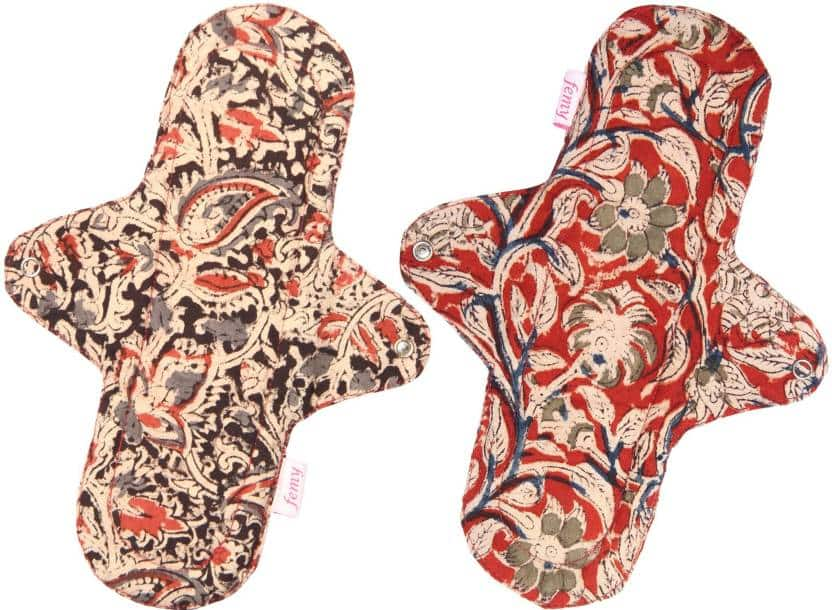
India’s battle with menstrual hygiene: How sanitary market is evolving to help women break barriers

India’s battle with menstrual hygiene: How sanitary market is evolving to help women break barriers

Every 8 minutes, an Indian woman dies due to cervical cancer. Statistics state that this is the second-most common cancer among Indian women.
While most cases of cancer are attributed to human papillomavirus (HPV) infection, the catalyst for cervical cancer is a uterine tract infection. However, the HPV vaccination and maintaining proper genital hygiene can only reduce the cancer risk.
Moreover, yeast infections, reproductive tract infection, microbial diseases and hepatitis B via transmission are other health risks that occur due to lack of menstrual hygiene.

There’s lack of awareness about women’s health in India, mostly due to the taboos and superstitions associated with female genital hygiene and menstruation. For example, cervical screening, visiting a gynaecologists and vaginal discharges are still considered embarrassing among the masses.
These taboos have stigmatised female hygiene to the extent that women in most suburban and rural areas reuse old pieces of cloth during menstruation. On the other hand, the “humiliation and secrecy” about mensuration -- in both rural and urban India -- leads to the problem of improper disposal of sanitary napkins and non-biodegradable napkins can be seen accumulating on landfills.
Moreover, women avoid conversations about how negligence of personal hygiene can lead to various urinary tract infections (UTIs). These diseases can lead to major problems for under privileged women in rural areas, as visiting hospitals and undergoing various procedures can be a tedious and costly task.
Whatever be the reason, menstruation is not perceived with normalcy. Women are considered “impure”, they are asked to stay away from male family members, have to sleep on the floor, and have to stay away from the kitchen. These unreal practices followed for centuries make women vulnerable and they shy away from dealing with menstruation in the right manner.

Non-governmental organisations (NGOs) have taken up various projects to spread sanitary awareness. The government’s Menstrual Hygiene Programme (MHP) is aimed at creating awareness about personal hygiene, while the Menstrual Hygiene Scheme (MHS) is helping improve menstrual health among adolescents.
In a written reply to the Lok Sabha, Minister of State for Health and Family Welfare, Ashwini Kumar Choubey, said that the schemes will promote the use of quality sanitary napkins that are environment friendly.
According to the National Family Health Survey (NFHS) 2015-16, 62 percent of Indian women used cloth during their periods. Overall, 58 percent of women used hygienic methods, while 42 percent used sanitary napkins and 16 percent used locally manufactured products.
However, there was vast difference between women in rural and urban areas. As many as 77.5 percent urban women used hygienic products during menstruation, while a staggering 51.5 percent women in rural areas do not use a proper sanitary products.

The survey revealed that more educated women -- around 81 percent – used proper sanitary products in comparison to those with no education.
Anshu Gupta, founder of Goonj, an organisation that works towards rural development, disaster relief and women’s hygiene said that India needs to adopt a comprehensive approach to spread awareness about sanitary hygiene.
“The current scenario of menstrual hygiene is product centric. If free distribution of condoms couldn’t control population growth, a free delivery of sanitary napkins would not bring total inclusion,” he pointed out.
Gupta said, “Acceptance, accessibility and affordability,” were three important aspects of the menstrual hygiene campaign. The Goonj founder stressed on the necessity of dialogue in menstrual health management (MHM).
“Most women suffer from rashes, itching and abnormal vaginal discharges and continue to live with these symptoms. A large part of rural India remains untouched and lack of a proper delivery mechanism [of sanitary products] and lower literacy rate awareness campaigns are hindered,” he noted.

Gupta acknowledged the recent growth of the sanitary product industry in the country in terms accessibility, availability and choice of products.
“However, rural India is not included in the e-commerce sanitary product sales circle as most villages remain out of bounds for e-commerce companies. Hence rural areas remain a part of menstrual hygiene implementation.”
He added that the cost of biodegradable products will reduce once orders are placed in bulk, which will bring an environmentally conscious step for building a sustainable market for such products.

Santanu Mishra, co-founder of Smile Foundation, agreed that menstrual hygiene is integral to empower women and for the well-being of girls.
“It will not be an overstatement to say that it is one of the most challenging development issues in our country today. Not just rural India, but urban quarters are equally at a loss. Deep-rooted taboos, myths and misinformation create the delusion that the whole process of menstruation is gross and shameful.”
Mishra emphasized that the aspect of menstrual hygiene is not linked with access to sanitary pads but to “reproductive health and women’s rights”.
“Our distribution system at Smile includes training community workers on how to provide education to both boys and girls about puberty and menstrual hygiene. Distributing sanitary napkins, safe disposal and other practices are taught to young girls,” he said.
When discussing about the evolution of sanitary products industry and its role on sensitising menstrual hygiene in India, the Smile co-founder said, “The efforts of aggressive advertisements by giants like Whisper [Procter and Gamble], Stayfree [Johnson and Johnson] to take control of the market, has contributed to creating an atmosphere of sanitary revolution.”

The sanitary products market is evolving at a fast pace with e-commerce players coming into the picture. The accessibility, choice and anonymity of female hygiene products has led to multidimensional growth in terms of consumers and sales.
There are multiple female hygiene products available in the market through these portals including, menstrual cups, stand and pee products, tampons, pain relief pads, biodegradable pads, essential gels and oils.

The economics of this market has also evolved. Big brands like Whisper was launched in 1989 in India by Procter and Gamble, which was a boon for women. With e-commerce reducing the cost of inventory, easing logistics and consumer secrecy, the hygiene market has certainly grown.
According to market research firm Euromonitor, the Indian market for female hygiene products was valued at $340 million in 2017, and it is expected to reach $522 million by 2020. Rise of disposal income, urbanisation, digitalisation, government initiatives for start-ups and CSR activities have all compounded growth of the market. These have encouraged local entrepreneurs to join the space leading to new innovations and solutions.
Deep Bajaj, founder Sirona of which Pee-Buddy is a flagship product said, “Digital India and awareness campaigns surrounding menstruation has incorporated innovations in female hygiene products. E-commerce sites have reduced geographical margins, inventory and logistical hassle, and this market is growing faster than ever in the last 20 years, post the launch of P&G Whisper napkins in India.”
Bajaj recognised the contribution of Whisper India, in creating the dialogue horizon around menstruation.

Bajaj explained, “Although rural India is comparatively not aware of many products, and digital payments are not in the loop in many places, awareness surrounding personal hygiene is on full swing. We got almost 2 million PeeBuddy orders across Tier 1, 2, 3 cities. The acceptance level is overwhelming.”
He added that, the accessibility and choice, hygiene literacy have triggered swell in this industry.
The Pee-Buddy founder was optimistic about changing dynamics of menstruation and taboo related to it. He acknowledged the Kerala government’s contribution of providing 5000 free menstrual cups.
“With the dialogue broadening and startups engaging in sustainable menstrual products, the growth of this industry is commendable. Govt initiatives, policy changes for Startups and collaborative involvement will take the female hygiene market in India to high rise,” Bajaj added.
Nishit Garg, Head of Books, General Merchandise and Home at Flipkart claimed that customers appreciate the convenience of e-commerce while buying menstruation products.
“The menstrual hygiene category on Flipkart has grown manifold over the last year, particularly in T2+ markets, where in the last three months five-fold growth has been witnessed. Through our pan-India network, Flipkart has managed to bridge the gap and provide access, convenience and discretion to woman across India, regardless of where they live.”
“While the market is still dominated by sanitary napkins, we have noted growing appetite for intimate care products, urinary cups and tampons. We have also seen organic and eco-friendly brands making an entrance in the market, as an option for more environmentally conscious consumers,” he added.

As far as sales and target consumers are concerned, the Flipkart General Merchandise Head stated that the highest demand for these products come from the East and Northern parts of India, with Punjab, Haryana and UP contributing to more than half of the demand in this category.